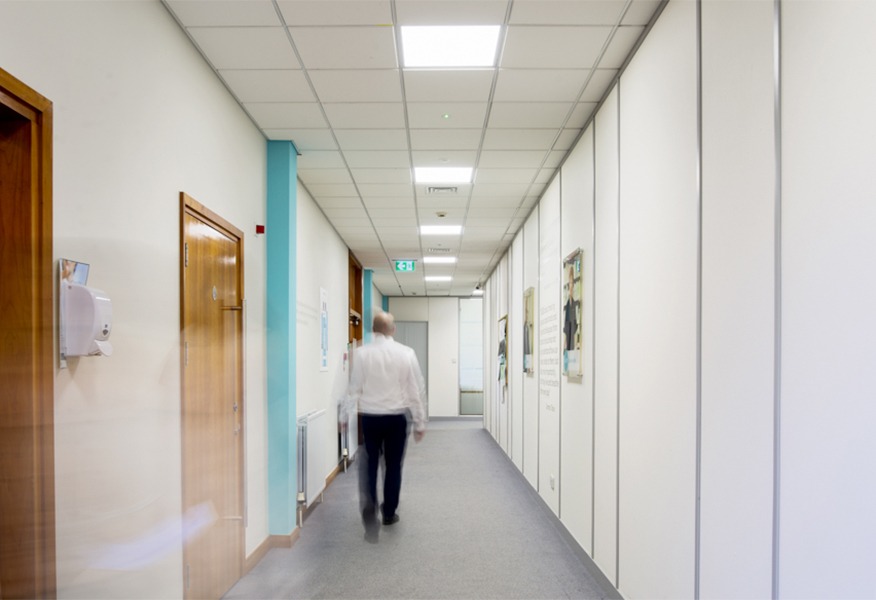
The Crucial Considerations of Emergency Lighting
With the Building Safety Bill now enshrined in law, Tamlite Lighting’s Technical Manager Dan Griffiths explores the crucial considerations of emergency lighting as the construction industry seeks to deliver excellence, consistency, and peace of mind.
Described by many across the construction industry as the most sweeping change to building safety in more than 40 years, the Building Safety Bill is now enshrined in law.
Many of the recommendations from Dame Judith Hackitt's independent review of building regulations in the aftermath of the 2017 Grenfell Tower tragedy have been included, such as the creation of the Building Safety Regulator (BSR), who will ensure the rules are enforced and action is taken against anybody deemed to have broken them, as well as the need for greater accountability at every stage of the building’s lifecycle.
Building a safer future
Whilst many of the provisions will not come into force for another 12 to 18 months, the Building Safety Bill provides the type of reassurance that has long been sought after - and the message to construction firms, their partners, and the supply chain is clear: they must do everything they can to make the buildings where we live and work as safe as possible, and they must be seen to be doing so.
As a leading lighting manufacturer, it is important for us to show leadership in raising awareness of the scope and importance of initiatives which improve building safety, as they provide a much-needed positive impact on the specification process.

Regrettably, lighting has often been an area that has fallen victim to spec-breaking, and it is arguable that the issue has become more acute in the LED era, with a fresh wave of low-price – but not always high-quality – luminaires hitting the market. In an age where we can no longer aim for minimum compliance to get the job done, the case for high quality solutions which enhance building safety can be highlighted when it comes to the installation, ongoing testing, and maintenance of emergency lighting.
To industry outsiders, it would be easy to assume that emergency lighting is a priority in the development and maintenance of all buildings. Unfortunately, our experience indicates that, all too frequently, it is still an issue that is being tackled in the later stages of a project, and sometimes with inadequate knowledge of the technical and legal requirements.
Fit for purpose solutions
Collaboration will be the key to success in reversing this, and due to their involvement at every stage of a project, electrical contractors are arguably amongst the best-placed to ensure building owners and managers are aware of the implications and requirements of emergency lighting and ensuring that this vital building safety system is fit for purpose.
Legal requirements: Emergency lighting products must be built and tested to BS EN60598-2-22, whilst they are now required to also be installed and tested in line with British Standard BS 5266:1 2016 – all results showing the emergency lighting should provide adequate light levels and directional indication in the event of a mains failure. We often explain to our end user customers, that contractors are arguably the best-placed ‘cog in the wheel’ to provide the specialist insight they need to ensure regulatory compliance. It is also the contractors who can best convey the benefits of investing in high-quality and durable systems to clients.
Risk Assessment: One of the most common mistakes made with emergency lighting include missing risk assessments, yet it is a legal requirement to have one. Ensure that risk assessments have been carried out and that the systems in place are fit for purpose.
Lighting design: It is important to ensure that the luminaires address a number of core issues. These include: the function of the building or room/area; the mode of operation (for example, office, commercial or residential); the extent to which users are familiar with the building, including consideration of whether it receives many short-term visitors; specific usage and how it is likely to change over time; aesthetic requirements, including compliance with listed status if applicable; and the fact that different fixture heights and distances will be required for lighting in various areas of the building.
Maintenance and Testing: Another common mistake is a lack of maintenance checks and regular testing of emergency lighting systems. Like all emergency equipment, emergency lighting should be maintained and tested regularly to ensure it is in full working order, and it is a legal requirement that emergency lighting be tested in line with of BS 5266:1 2016 – all of which should be formally recorded. For example, a daily visual inspection can be carried out to check the batteries are being charged and are operational, whilst a monthly test must be carried out to ensure luminaires turn on in the event of a power outage. Any remedial work on failures should be carried out and recorded. Emergency lighting systems must undergo a full test on an annual basis. This test ensures that all emergency lights continue to function for a 3-hours duration.
The importance of emergency lighting cannot be understated. In this context, it is advisable to partner with a specialist lighting provider such as Tamlite, safe in the knowledge that this provides the most direct route to achieving an emergency infrastructure that is entirely fit for purpose.
There is no doubt that it will take some years for the public in general to feel confident about the safety of buildings. But collectively we can all play a key role in constructing a culture of responsibility, providing the way forward to a brighter, safer future.
You can visit our emergency sector page here.